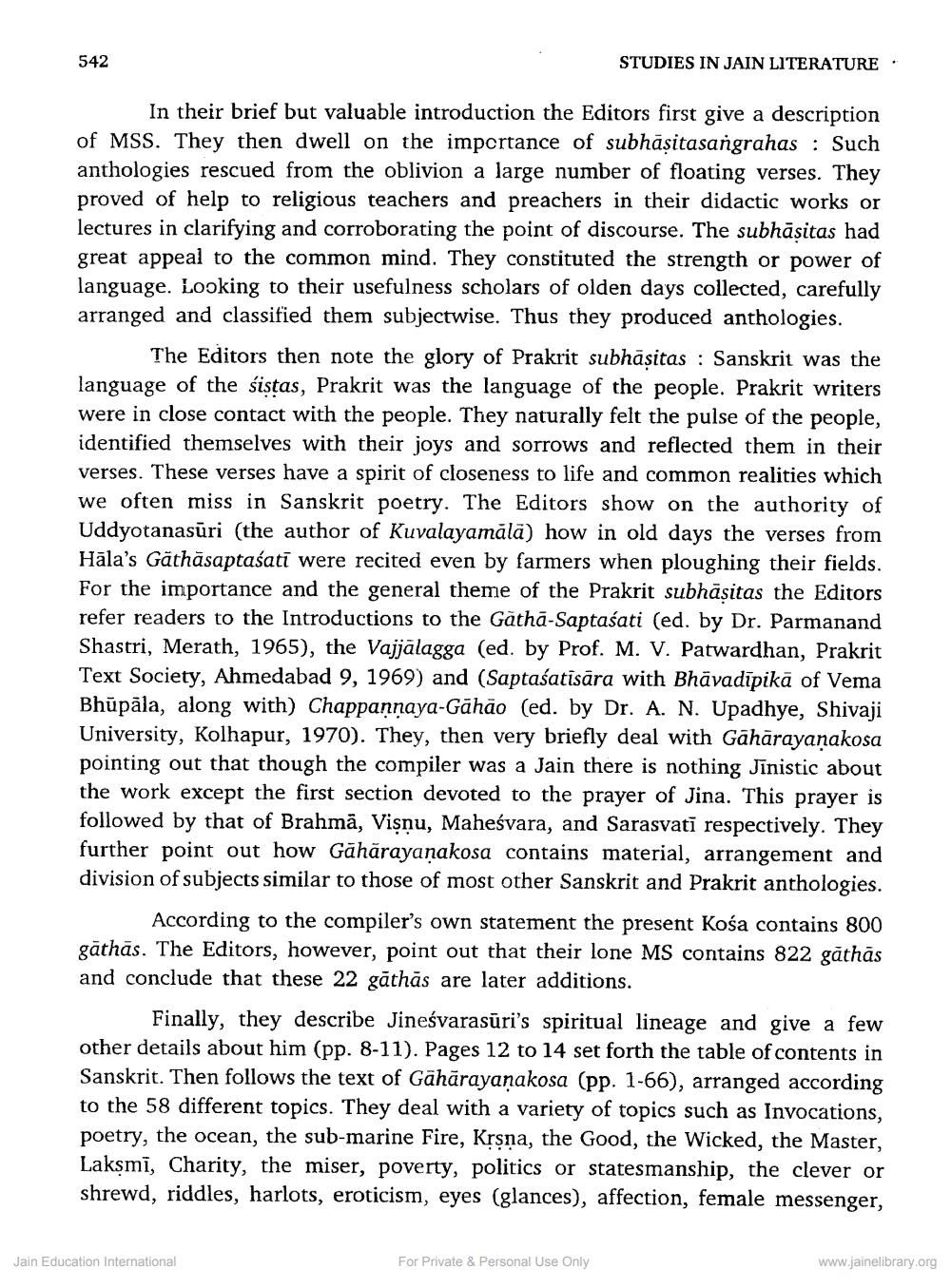________________ 542 STUDIES IN JAIN LITERATURE - In their brief but valuable introduction the Editors first give a description of MSS. They then dwell on the importance of subhasitasangrahas : Such anthologies rescued from the oblivion a large number of floating verses. They proved of help to religious teachers and preachers in their didactic works or lectures in clarifying and corroborating the point of discourse. The subhasitas had great appeal to the common mind. They constituted the strength or power of language. Looking to their usefulness scholars of olden days collected, carefully arranged and classified them subjectwise. Thus they produced anthologies. The Editors then note the glory of Prakrit subhasitas : Sanskrit was the language of the sistas, Prakrit was the language of the people. Prakrit writers were in close contact with the people. They naturally felt the pulse of the people, identified themselves with their joys and sorrows and reflected them in their verses. These verses have a spirit of closeness to life and common realities which we often miss in Sanskrit poetry. The Editors show on the authority of Uddyotanasuri (the author of Kuvalayamala) how in old days the verses from Hala's Gathasaptasati were recited even by farmers when ploughing their fields. For the importance and the general theme of the Prakrit subhasitas the Editors refer readers to the Introductions to the Gatha-Saptasati (ed. by Dr. Parmanand Shastri, Merath, 1965), the Vajjalagga (ed. by Prof. M. V. Patwardhan, Prakrit Text Society, Ahmedabad 9, 1969) and (Saptasatisara with Bhavadipika of Vema Bhupala, along with) Chappannaya-Gahao (ed. by Dr. A. N. Upadhye, Shivaji University, Kolhapur, 1970). They, then very briefly deal with Gaharayanakosa pointing out that though the compiler was a Jain there is nothing Jinistic about the work except the first section devoted to the prayer of Jina. This prayer is followed by that of Brahma, Visnu, Mahesvara, and Sarasvati respectively. They further point out how Gaharayanakosa contains material, arrangement and division of subjects similar to those of most other Sanskrit and Prakrit anthologies. According to the compiler's own statement the present Kosa contains 800 gathas. The Editors, however, point out that their lone MS contains 822 gathas and conclude that these 22 gathas are later additions. Finally, they describe Jinesvarasuri's spiritual lineage and give a few other details about him (pp. 8-11). Pages 12 to 14 set forth the table of contents in Sanskrit. Then follows the text of Gaharayanakosa (pp. 1-66), arranged according to the 58 different topics. They deal with a variety of topics such as Invocations, poetry, the ocean, the sub-marine Fire, Krsna, the Good, the Wicked, the Master, Laksmi, Charity, the miser, poverty, politics or statesmanship, the clever or shrewd, riddles, harlots, eroticism, eyes (glances), affection, female messenger, Jain Education International For Private & Personal Use Only www.jainelibrary.org




